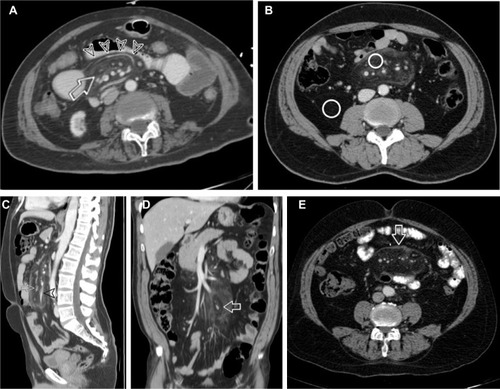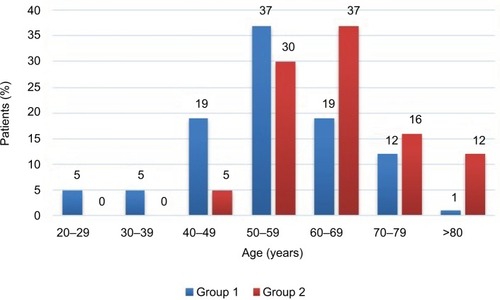Figures & data
Figure 1 Abdominal computed tomography scans showing the classical signs of mesentric panniculitis.

Table 1 Distribution of MP in both groups according to age and gender
Table 2 Associated malignancies of the patients in Group 2
Table 3 CT characteristics of mesenteric panniculitis in both groups
Table 4 Total number of PC
Table 5 Measurement of the dimensions, volume, mass effect, fat density, and lymph nodes of the MP masses in both groups
Table 6 Risk factors for associated malignancy in patients with MP: RR with 95% CIs and ORs

